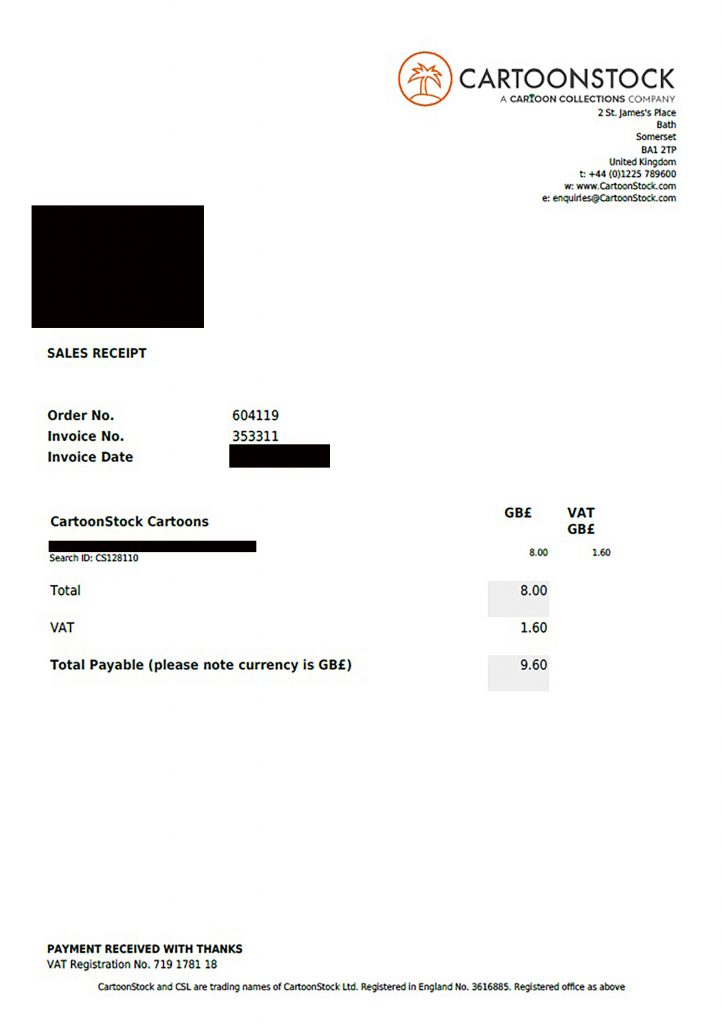Content:
- Introduction To Verification
- Twitter X
- TikTok
The Importance of Verifying Social Media Accounts: Enhancing Trust and Credibility
Introduction: Social media has become an integral part of our lives, both personally and professionally, with billions of users worldwide, platforms like Facebook, Instagram, Twitter, and others serve as essential tools for communication, networking, and brand promotion. However, amidst the vast sea of profiles and content, establishing trust and credibility can be challenging. This is where the verification of social media accounts plays a crucial role.
What is Verification?
Verification is the process through which social media platforms authenticate the identity of users, typically by attaching a verified badge or checkmark to their profiles. This badge serves as a mark of authenticity, indicating that the account is genuine and associated with a legitimate individual, brand, or organization.
Benefits of Verifying Social Media Accounts:
- Enhanced Credibility: Verified accounts instill trust and credibility among followers and potential customers. Users are more likely to engage with content from verified accounts, knowing that they are interacting with legitimate sources.
- Prevention of Impersonation: Verification helps prevent impersonation and identity theft on social media platforms. By verifying accounts, platforms can distinguish genuine profiles from fake or unauthorized ones, reducing the risk of scams and fraudulent activities.
- Establishing Authority: For individuals, brands, and businesses, a verified badge signifies authority and influence within their respective fields. It establishes them as reputable figures or entities, which can attract a larger audience and enhance their online reputation.
- Improved Visibility and Reach: Verified accounts often receive preferential treatment from social media algorithms, resulting in higher visibility and reach. This can lead to increased exposure for content and greater engagement with followers.
- Protection Against Misinformation: Verified accounts are better equipped to combat misinformation and fake news. Their verified status lends credibility to the information they share, helping to distinguish factual content from unreliable sources.
- Verification of Official Accounts: Social media platforms verify accounts of public figures, celebrities, brands, and organizations to distinguish them from fan accounts or unofficial pages. This ensures that users can easily find and connect with the official representatives of their favorite personalities or brands.
- Streamlined Communication: Verification simplifies communication between users and verified accounts. It provides a clear indicator of authenticity, making it easier for users to identify and engage with trusted sources.
- Building Consumer Trust: For businesses and brands, verification builds consumer trust and confidence in their products or services. It signals to potential customers that they are dealing with a reputable and established entity, encouraging them to engage and transact with greater confidence.
The verification of social media accounts offers numerous benefits, ranging from enhanced credibility and authority to improved visibility and protection against impersonation. Whether you’re an individual, brand, or organization, obtaining a verified badge on social media can significantly bolster your online presence and reputation. By prioritizing verification, users and businesses can build trust, credibility, and authenticity in the digital landscape, ultimately fostering positive relationships with their audience and stakeholders.
How to Verify Your Account on Facebook
Verifying your account on Facebook can add an extra layer of security and credibility to your profile. Here’s a step-by-step guide on how to do it:
- Log in to Your Account: Visit Facebook’s website or open the Facebook app on your mobile device and log in using your credentials.
- Access Settings: Once logged in, navigate to your profile by clicking on your name or profile picture. Then, locate the dropdown arrow at the top right corner of the page. Click on it to reveal a menu. From the menu, select “Settings & Privacy” and then choose “Settings”.
- Navigate to Verification Settings: In the Settings menu, look for the “General” tab on the left-hand side. Click on it. Within the General settings, you’ll find the option “Personal Information”. Click on it, and you should see the “Identity Confirmation” section.
- Start Verification Process: Click on the “Confirm Your Identity” option. Facebook may prompt you to re-enter your password for security reasons.
- Choose Verification Method: Facebook offers different methods to verify your identity. The available options may include providing a government-issued ID, such as a driver’s license or passport, entering a mobile phone number, or connecting to your official business website.
- Provide Necessary Information: Depending on the method you choose, you will need to provide the required information. For example, if you choose to verify with a government-issued ID, you’ll need to upload a scanned image or photo of your ID. Ensure that the information matches the details on your Facebook account.
- Submit for Review: After providing the necessary information, review it carefully to ensure accuracy. Once you’re satisfied, submit the verification request to Facebook for review.
- Wait for Confirmation: Facebook will review your submission, which may take some time. You will receive a notification once your account has been verified or if any additional steps are required.
- Confirmation: If your verification is successful, you will receive a confirmation notification from Facebook. Your profile will display a verification badge, usually in the form of a blue checkmark, indicating that your account is verified.
- Maintain Accuracy: It’s essential to keep your profile information accurate and up-to-date to maintain your account’s verification status. If any changes occur, such as a name change or updated ID, make sure to update your Facebook account accordingly.
Remember, not all accounts are eligible for verification, and Facebook reserves the right to verify accounts based on its own criteria, which often prioritize accounts of public figures, celebrities, brands, and businesses. If your account isn’t eligible for verification, focus on keeping your account secure by enabling two-factor authentication and following Facebook’s community standards and policies.
How to Verify Your Account on Instagram
Verifying your Instagram account can help establish authenticity and credibility, especially for public figures, celebrities, brands, and businesses. Here’s a step-by-step guide on how to verify your Instagram account:
- Open the Instagram App: Launch the Instagram app on your mobile device. Ensure you are logged into the account you wish to verify.
- Access Your Profile: Tap on the profile icon located at the bottom right corner of the screen. This will take you to your Instagram profile.
- Access Settings: On your profile page, locate the three horizontal lines or the gear icon (for iOS devices) at the top right corner of the screen. Tap on it to access the settings menu.
- Navigate to Account Settings: Scroll down the settings menu and find the “Account” option. Tap on it to proceed.
- Access Request Verification: Within the Account settings, look for the “Request Verification” option. It’s usually located towards the bottom of the list. Tap on it to initiate the verification process.
- Provide Necessary Information: Instagram will prompt you to fill out a verification form. This form typically requires you to provide your account username, full name, and a form of identification. Depending on your account type (individual or business), you may need to provide different types of identification.
- Upload Supporting Documents: Instagram typically requires you to upload a government-issued photo ID, such as a driver’s license, passport, or national identification card. Ensure that the information on the ID matches the details you provided in the verification form.
- Submit Verification Request: Once you’ve filled out the verification form and uploaded the necessary documents, review all the information carefully to ensure accuracy. Then, tap on the “Submit” or “Send” button to submit your verification request to Instagram.
- Wait for Review: Instagram will review your verification request, which may take some time. Be patient and keep an eye on your notifications for any updates regarding the status of your request.
- Confirmation: If your verification request is successful, you will receive a notification from Instagram confirming that your account has been verified. Your profile will display a blue checkmark badge next to your username, indicating that it’s a verified account.
- Maintain Authenticity: Once your account is verified, it’s important to continue following Instagram’s community guidelines and terms of service to maintain your verified status. Avoid engaging in activities that could jeopardize your account’s credibility.
Remember, Instagram reserves the right to verify accounts based on its own criteria, and not all accounts are eligible for verification. If your verification request is denied, you can reapply after 30 days. Focus on building a strong presence on Instagram through high-quality content, engagement with your audience, and adherence to community guidelines.
Verifying Twitter (X) Account
- Access Your Account Settings: Log in to your Twitter account using your username and password. Once logged in, click on your profile picture at the top right corner of the screen to open a dropdown menu. From the dropdown menu, select “Settings and privacy.”
- Navigate to Verification: In the Settings and Privacy menu, find the “Account” section on the left sidebar. Under “Account,” look for the option labeled “Verification request” or “Verification.” Click on it to start the verification process.
- Review Eligibility Requirements: Before proceeding with the verification request, review Twitter’s eligibility criteria. Generally, Twitter verifies accounts of public figures, brands, organizations, and individuals in key interest categories. Ensure that your account meets Twitter’s verification requirements to increase your chances of approval.
- Complete the Verification Form: Twitter will prompt you to complete a verification form. This form typically requires you to provide: Your account username. A profile picture that represents you or your brand. A header photo that reflects your brand or identity. A bio that accurately describes you or your brand. A website link that provides additional information about you or your brand. Additional information or links to news articles, press releases, or other materials that establish your identity or credibility. Fill out the form accurately and provide all the necessary information requested by Twitter.
- Upload Supporting Documents: Twitter may require you to upload supporting documents to verify your identity or affiliation with a brand or organization. These documents may include a government-issued ID (e.g., driver’s license, passport). Articles of incorporation or business license (for brands or organizations). Official documents that demonstrate your public figure status (e.g., press releases, news articles). Upload the required documents securely and ensure that they meet Twitter’s verification guidelines.
- Submit Verification Request: Once you’ve completed the verification form and uploaded the necessary documents, review all the information carefully. Double-check that everything is accurate and up-to-date. Click on the “Submit” or “Send” button to submit your verification request to Twitter.
- Wait for Review: After submitting your verification request, Twitter will review your application. Verification review times can vary, so be patient and monitor your email and Twitter notifications for updates on the status of your request.
- Confirmation: If your verification request is successful, Twitter will notify you via email and in-app notification. Your profile will display a blue checkmark badge next to your username, indicating that it’s a verified account. Congratulations! Your account is now verified on Twitter.
- Maintain Verified Status: Once your account is verified, continue to adhere to Twitter’s rules and guidelines. Avoid engaging in activities that could jeopardize your account’s credibility or violate Twitter’s terms of service. Regularly update your profile information and engage with your audience to maintain an active and authentic presence on Twitter.
By following these steps, you can successfully verify your account on Twitter and establish authenticity and credibility in the Twitterverse.
Guide to Verifying Your TikTok Account
- Open the TikTok App: Launch the TikTok app on your mobile device. Ensure you are logged into the account you wish to verify.
- Access Your Profile: Tap on the “Me” icon located at the bottom right corner of the screen. This will take you to your TikTok profile.
- Access Settings: On your profile page, locate the three horizontal dots or the settings gear icon, usually found at the top right corner of the screen. Tap on it to access the settings menu.
- Navigate to Privacy and Settings: In the settings menu, look for the “Privacy and Settings” option. Tap on it to proceed.
- Access Account Settings: Within the Privacy and Settings menu, find the “Manage Account” section. Tap on it to access your account settings.
- Request Verification: In the Account settings, look for the “Request Verification” option. This option may be labeled differently, such as “Verify account” or “Verification badge.” Tap on the verification option to start the verification process.
- Complete Verification Form: TikTok will prompt you to complete a verification form. This form typically requires you to provide: Your account username. A profile picture that represents you or your brand. A bio that accurately describes you or your brand. Links to your other social media profiles (optional). Fill out the form accurately and provide all the necessary information requested by TikTok.
- Upload Supporting Documents: TikTok may require you to upload supporting documents to verify your identity or affiliation with a brand or organization. These documents may include a government-issued ID (e.g., driver’s license, passport). Documents that demonstrate your public figure status or affiliation with a brand or organization. Upload the required documents securely and ensure that they meet TikTok’s verification guidelines.
- Submit Verification Request: Once you’ve completed the verification form and uploaded the necessary documents, review all the information carefully. Double-check that everything is accurate and up-to-date. Tap on the “Submit” or “Send” button to submit your verification request to TikTok.
- Wait for Review: After submitting your verification request, TikTok will review your application. Verification review times can vary, so be patient and monitor your notifications for updates on the status of your request.
- Confirmation: If your verification request is successful, TikTok will notify you via email and in-app notification. Your profile will display a verification badge, usually in the form of a blue checkmark, indicating that it’s a verified account. Congratulations! Your account is now verified on TikTok.
- Maintain Verified Status: Once your account is verified, continue to adhere to TikTok’s community guidelines and policies. Engage with your audience regularly and create high-quality content to maintain an active and authentic presence on TikTok.
By following these steps, you can successfully verify your account on TikTok and establish authenticity and credibility on the platform.
Guide to Verifying Your Pinterest Account
- Access Your Account Settings: Log in to your Pinterest account using your username and password. Once logged in, click on your profile picture at the top right corner of the screen to open a dropdown menu. From the dropdown menu, select “Settings” to access your account settings.
- Navigate to Account Settings: In the Settings menu, look for the “Account settings” section. This may be labeled differently depending on the version of Pinterest you’re using. Click on the “Account settings” option to proceed.
- Access Claim Website: Within the Account settings, find the “Claim” or “Claim website” option. This is where you can verify your website or blog with Pinterest. Click on the “Claim” option to start the verification process.
- Choose Verification Method: Pinterest offers multiple verification methods, including adding an HTML tag to your website, uploading an HTML file to your website’s server, or verifying through a meta tag. Choose the verification method that works best for you and your website.
- Follow Verification Instructions: Depending on the verification method you selected, Pinterest will provide you with specific instructions to complete the verification process. For example, if you choose to verify by adding an HTML tag, Pinterest will provide you with a snippet of code to add to the header section of your website’s HTML code.
- Verify Your Website: Follow the instructions provided by Pinterest to verify your website. This may involve adding the provided HTML code to your website or uploading the HTML file to your website’s server. Once you’ve completed the verification steps, click on the “Verify” or “Finish” button within Pinterest to confirm.
- Wait for Verification: After completing the verification steps, Pinterest will attempt to verify your website. Verification may take some time, so be patient and check back later to see if your website has been successfully verified.
- Confirmation: If your website verification is successful, Pinterest will notify you via email and in-app notification. Your profile will display a checkmark badge next to your website URL, indicating that it’s a verified website.
- Additional Verification Options: In addition to website verification, Pinterest also offers verification for profiles representing public figures, celebrities, brands, and businesses. To request profile verification, contact Pinterest support and provide them with relevant information and documentation to verify your identity or affiliation with the entity you represent.
- Maintain Verified Status: Once your website or profile is verified on Pinterest, continue to adhere to Pinterest’s community guidelines and policies. Regularly update your website or profile with high-quality content and engage with your audience to maintain an active and authentic presence on Pinterest.
By following these steps, you can successfully verify your account or website on Pinterest and establish authenticity and credibility on the platform.
Guide to Verifying Your LinkedIn Account
- Access Your LinkedIn Profile: Log in to your LinkedIn account using your username and password. Once logged in, navigate to your profile by clicking on your profile picture or the “Me” icon at the top right corner of the screen.
- Access Privacy & Settings: Click on the “Me” dropdown menu and select “Settings & Privacy” from the options.
- Navigate to Privacy: In the “Settings & Privacy” menu, click on the “Privacy” tab located on the left-hand side.
- 4. Access Visibility: Scroll down to the “How others see your profile and network information” section. Click on “Edit your public profile” to access your profile visibility settings.
- Customize Your Public Profile URL: In the public profile settings, customize your public profile URL to make it more professional and easier to find. Click on “Edit your custom URL” and enter a personalized URL that includes your name or brand.
- Enable Public Profile Features: Scroll down to the “Profile visibility off LinkedIn” section. Make sure the toggle switch for “Your profile’s public visibility” is turned on to allow your profile to be visible to non-LinkedIn members.
- Verify Email Address: Verify the email address associated with your LinkedIn account if you haven’t already done so. LinkedIn may require you to verify your email address to ensure the security of your account.
- Add Phone Number: Optionally, you can add and verify your phone number for added security and to enhance your account’s credibility.
- 9. Provide Additional Information: LinkedIn may prompt you to provide additional information to verify your identity or professional credentials. Fill out any required fields accurately to strengthen your profile’s authenticity.
- Request Verification Badge: Contact LinkedIn support to request a verification badge for your account. Provide any necessary documentation or proof of identity or affiliation with a company or organization.
- Wait for Review: Once you’ve submitted your verification request, LinkedIn will review your application. Verification review times can vary, so be patient and monitor your email for updates on the status of your request.
- Confirmation: If your verification request is successful, LinkedIn will notify you via email and in-app notification. Your profile will display a verification badge, typically in the form of a blue checkmark, next to your name, indicating that it’s a verified account.
- Maintain Verified Status: After your account is verified, continue to adhere to LinkedIn’s community guidelines and policies. Regularly update your profile with relevant information, connect with professionals in your industry, and engage with your network to maintain an active and credible presence on LinkedIn.
By following these steps, you can successfully verify your account on LinkedIn and establish authenticity and credibility in the professional networking community.
Further Reading:
- Facebook: Request a verified badge on Facebook | Facebook Help Centre
- Instagram: Verify your business on Instagram | Instagram Help Centre (facebook.com)
- Twitter X: X Verification requirements – how to get the blue check (twitter.com)
- TikTok: Verified accounts on TikTok | TikTok Help Center
- Pinterest: Verified accounts | Pinterest Business help
- LinkedIn: Verify your identity to recover account access | LinkedIn Help
#socialmedia #socialmediaverification #security #facebook #twitter #x #instagram #tiktok #pinterest #linkedin #bluetick #verifiedaccounts






